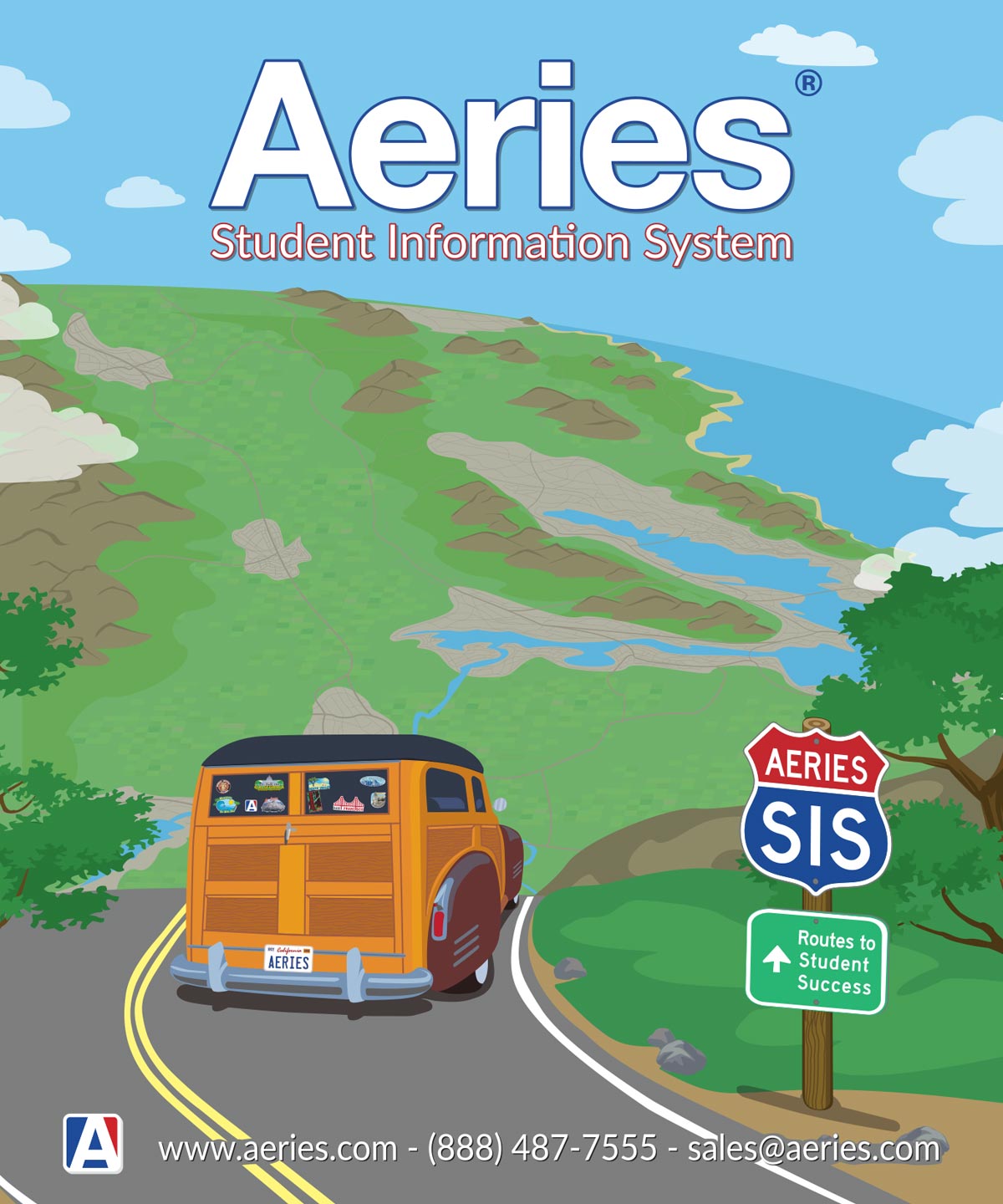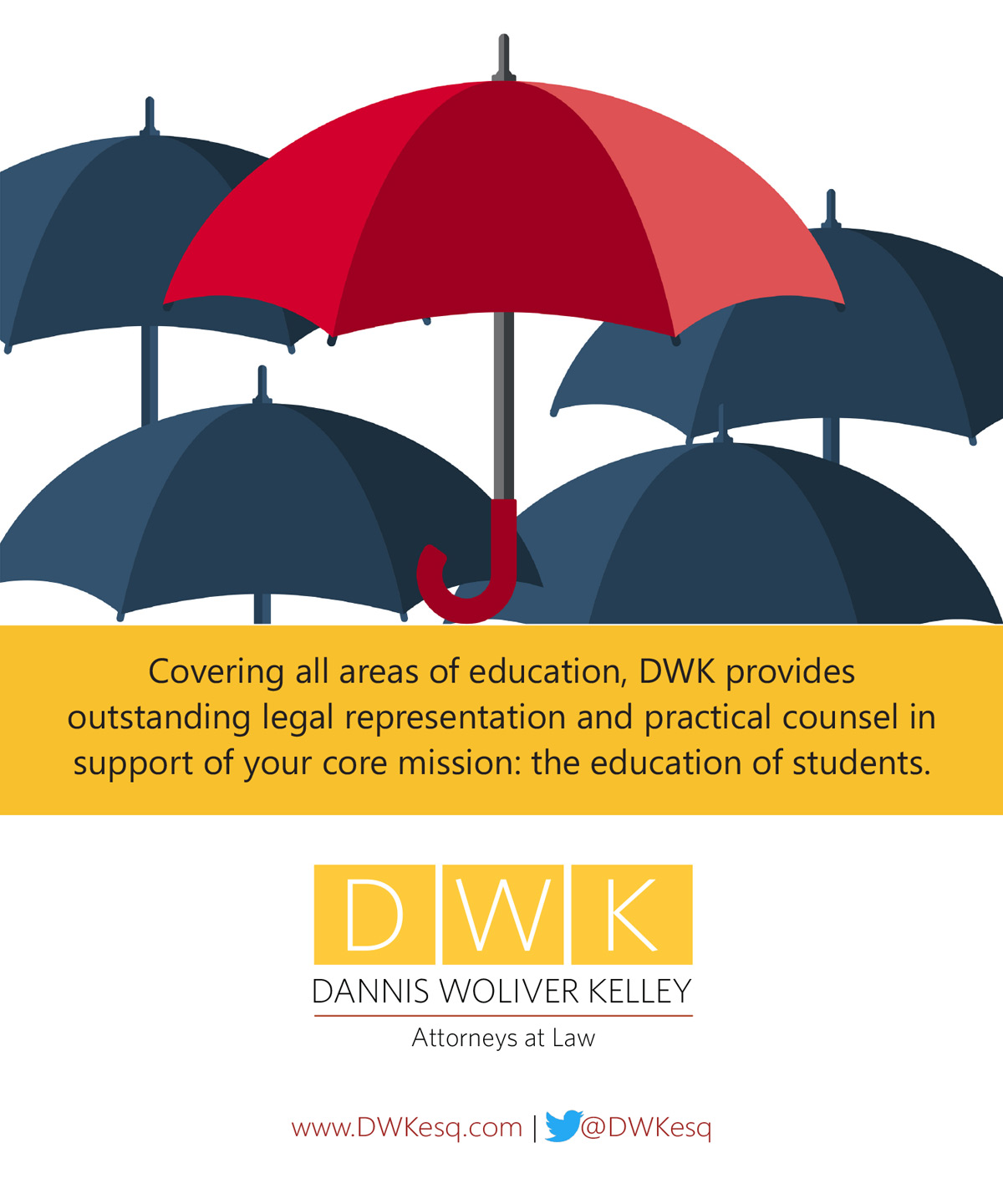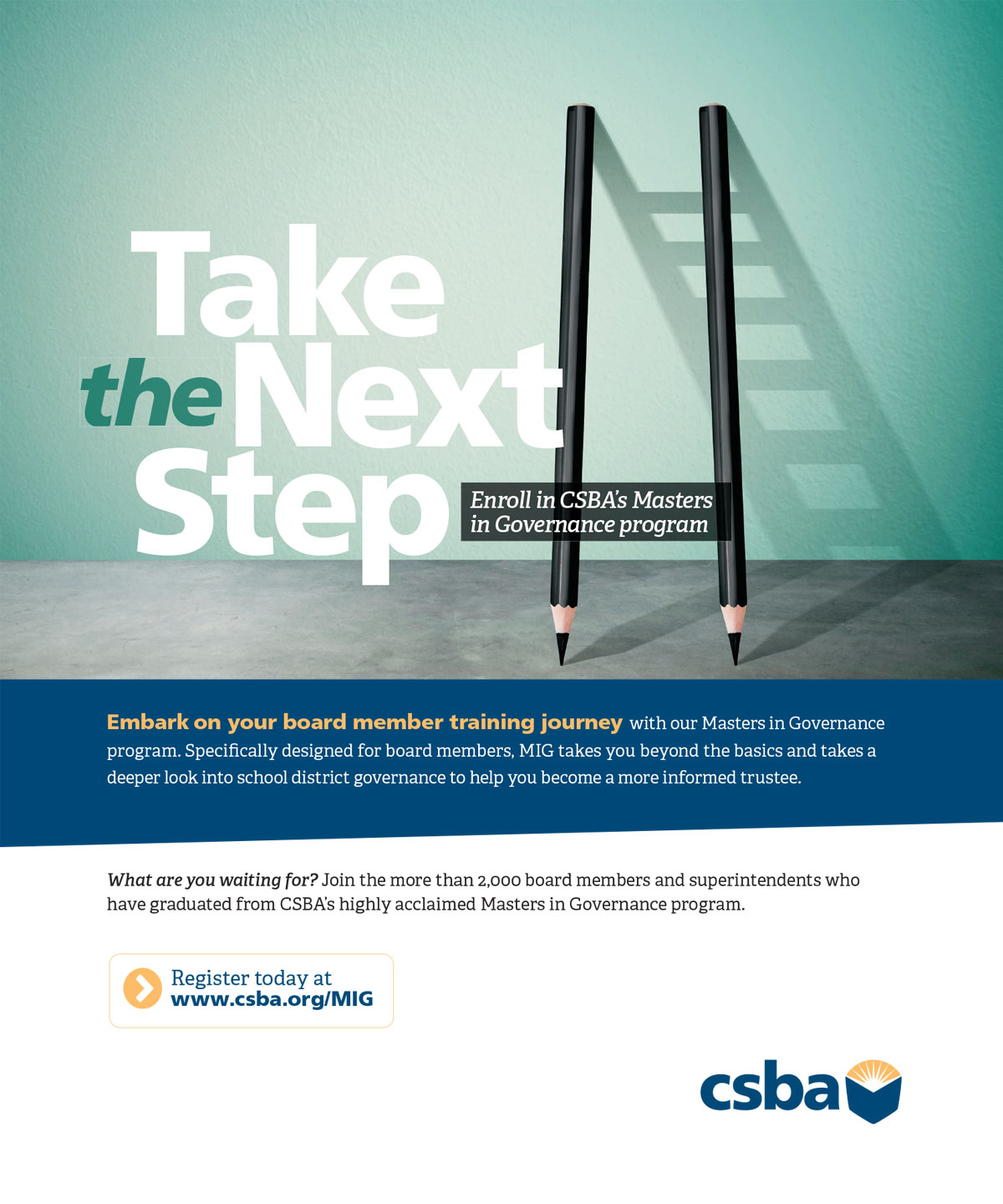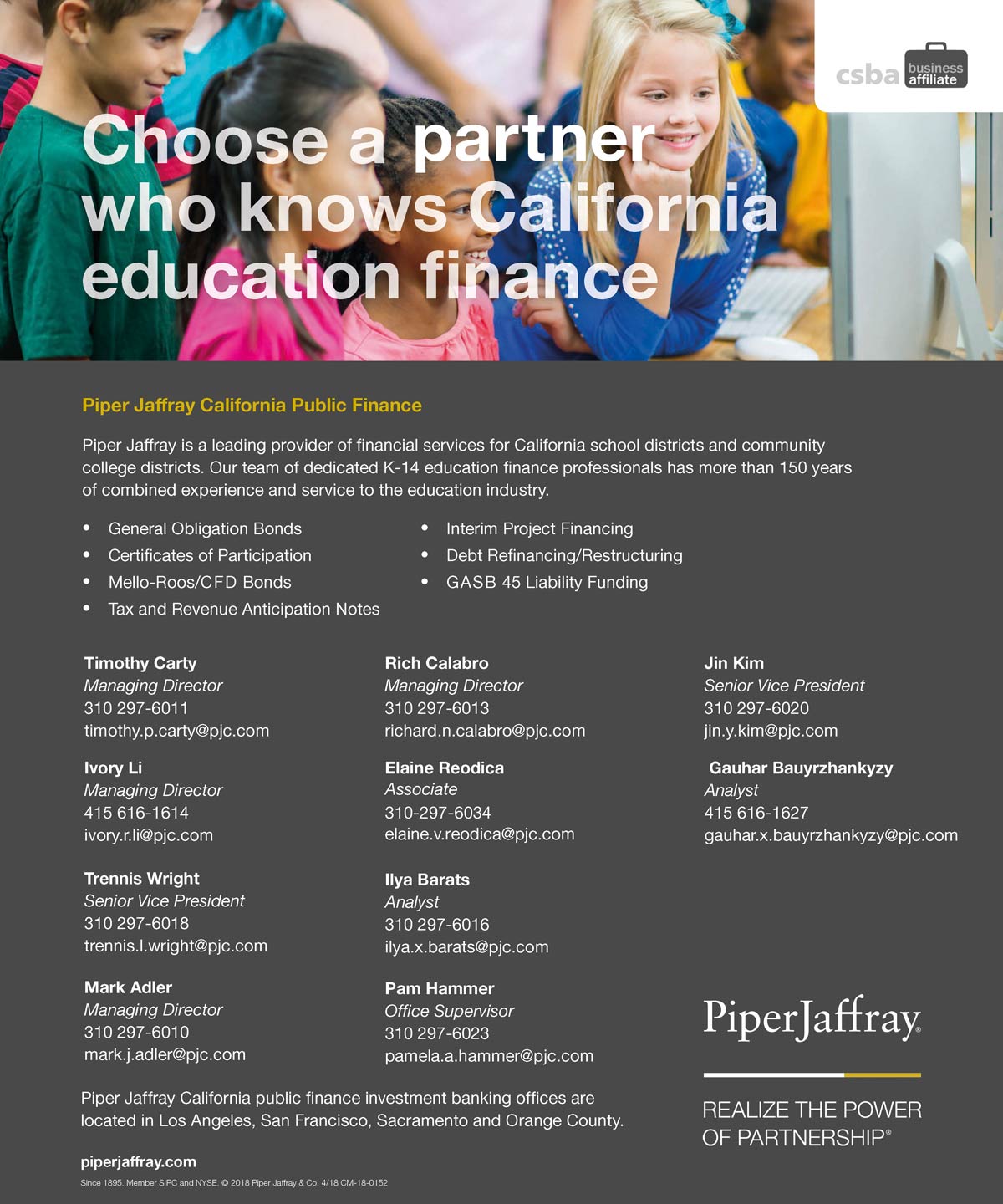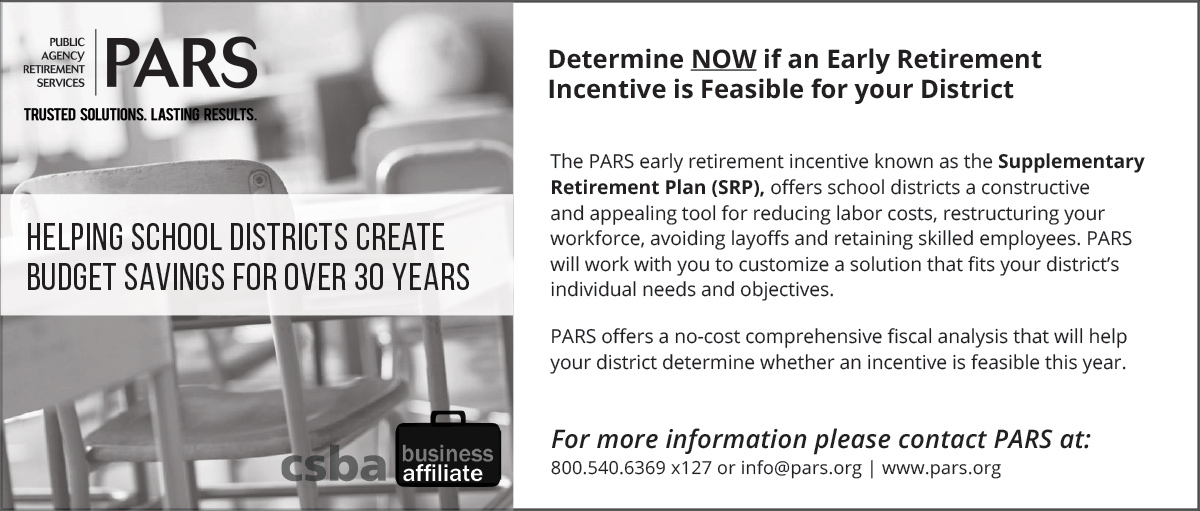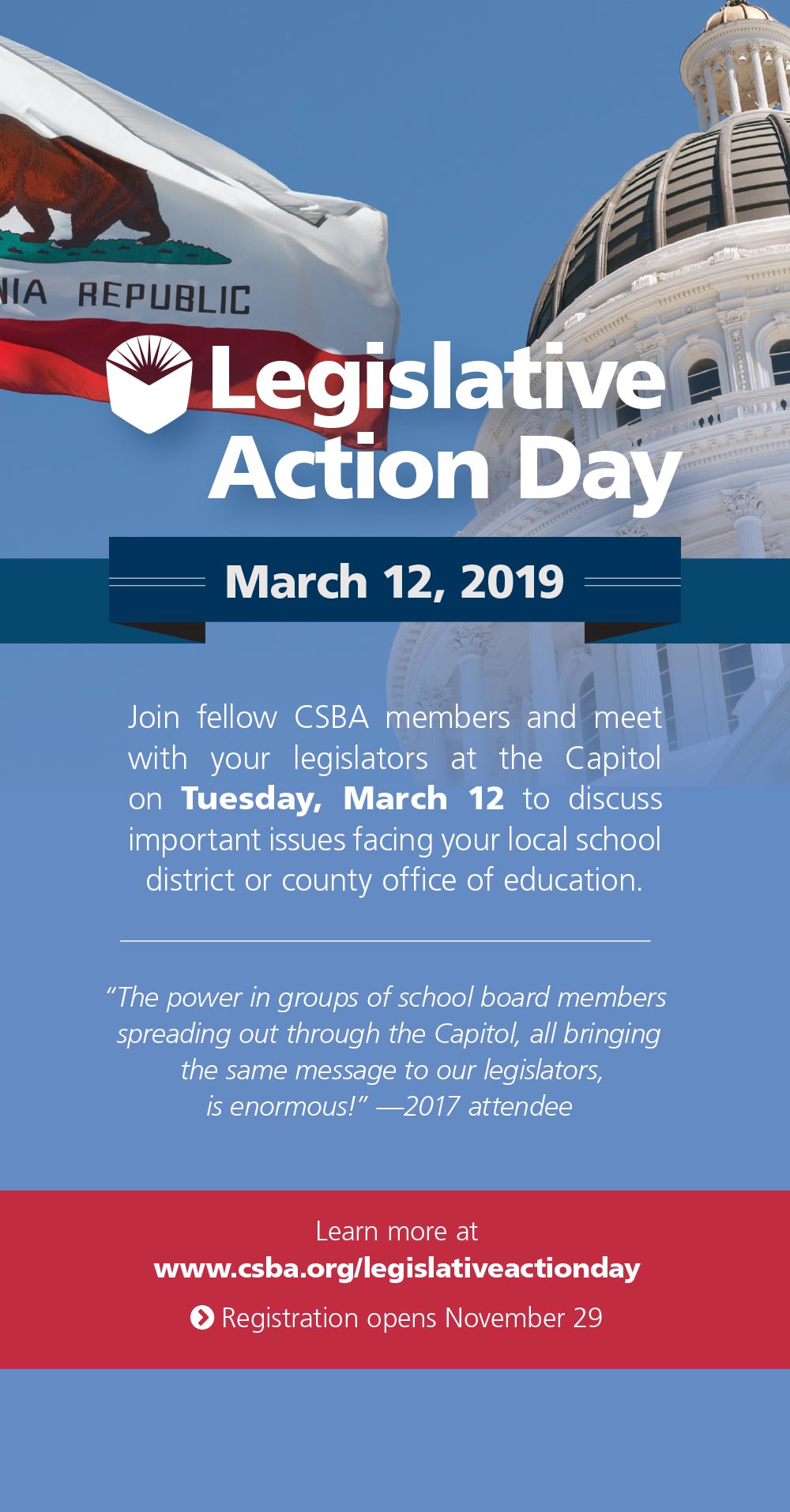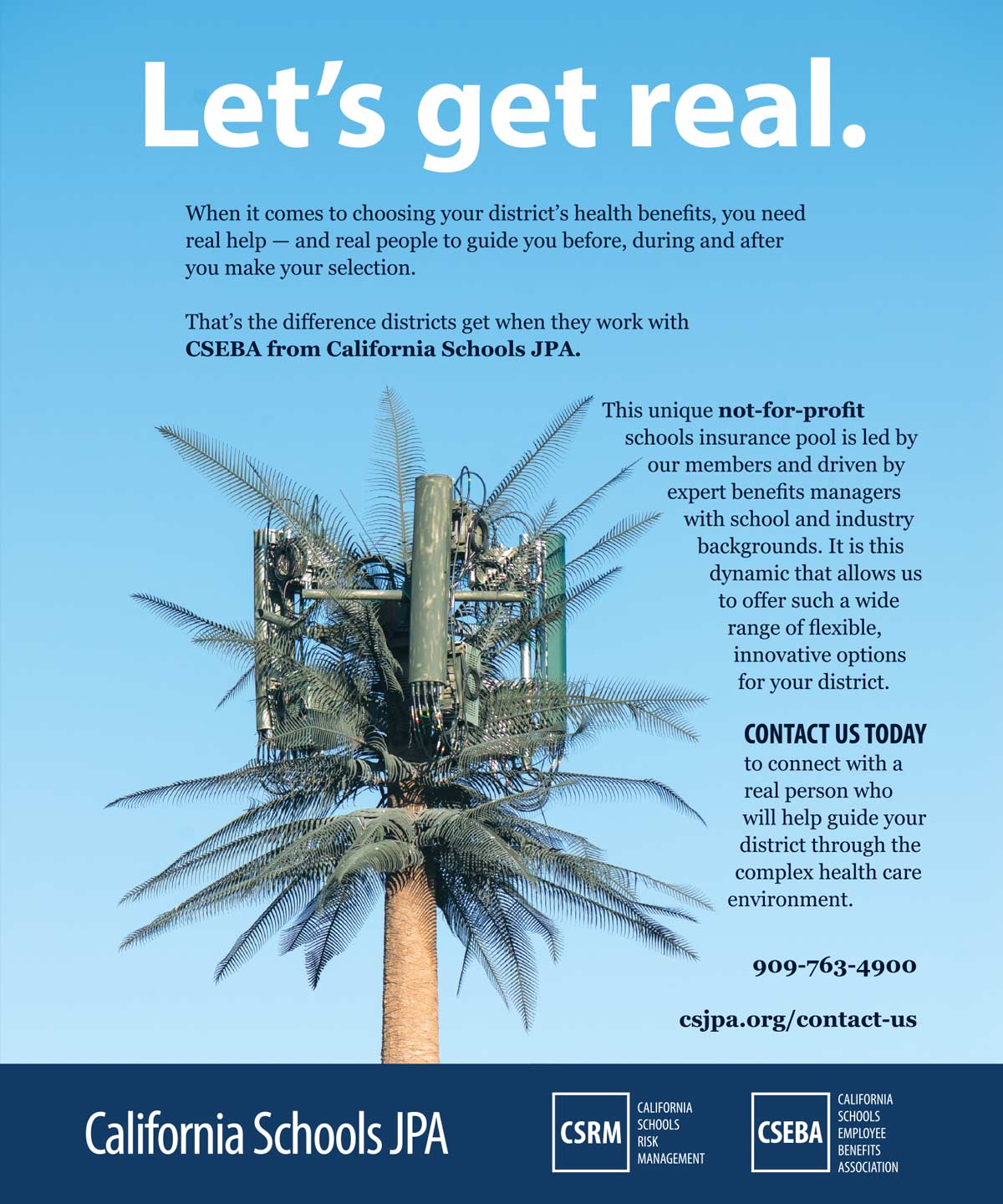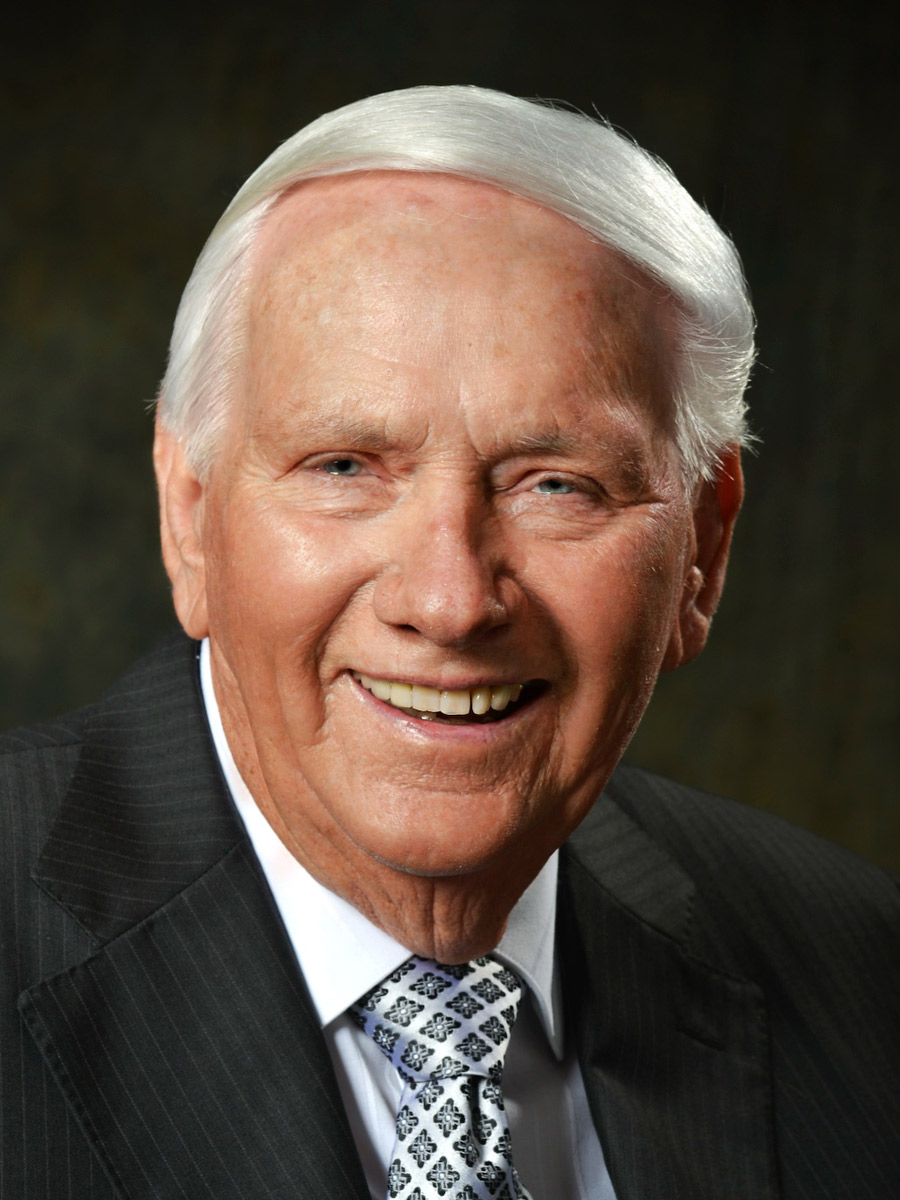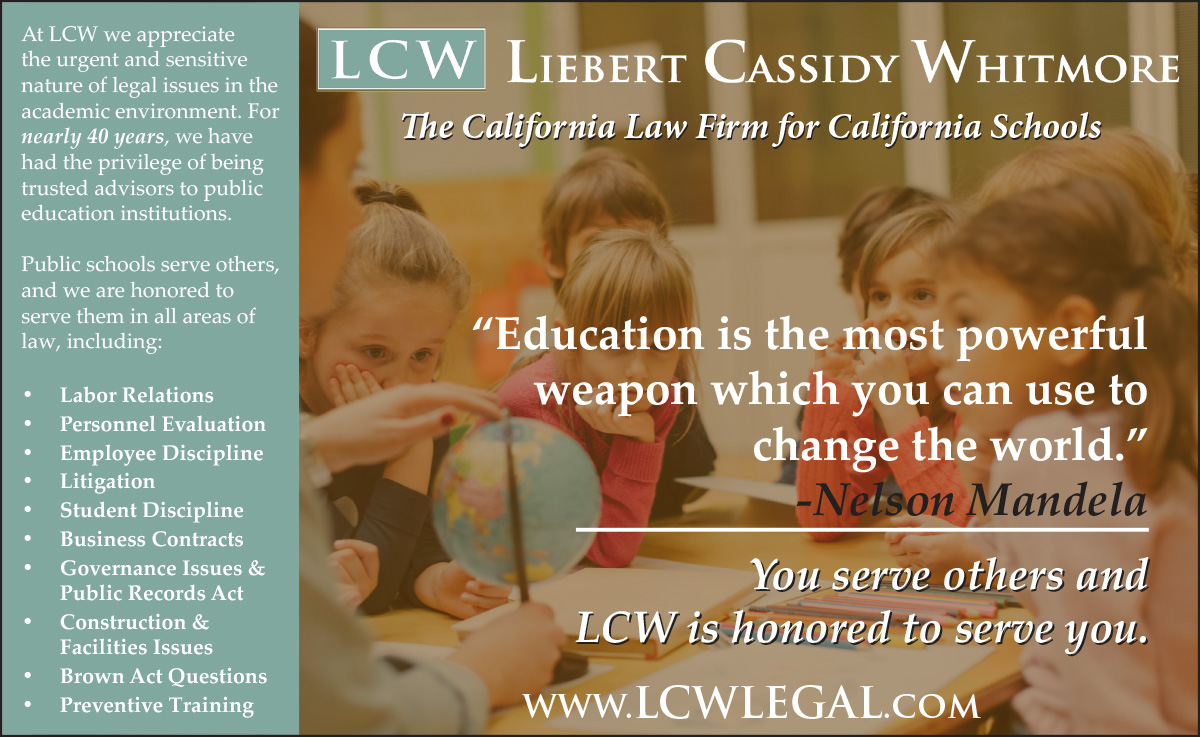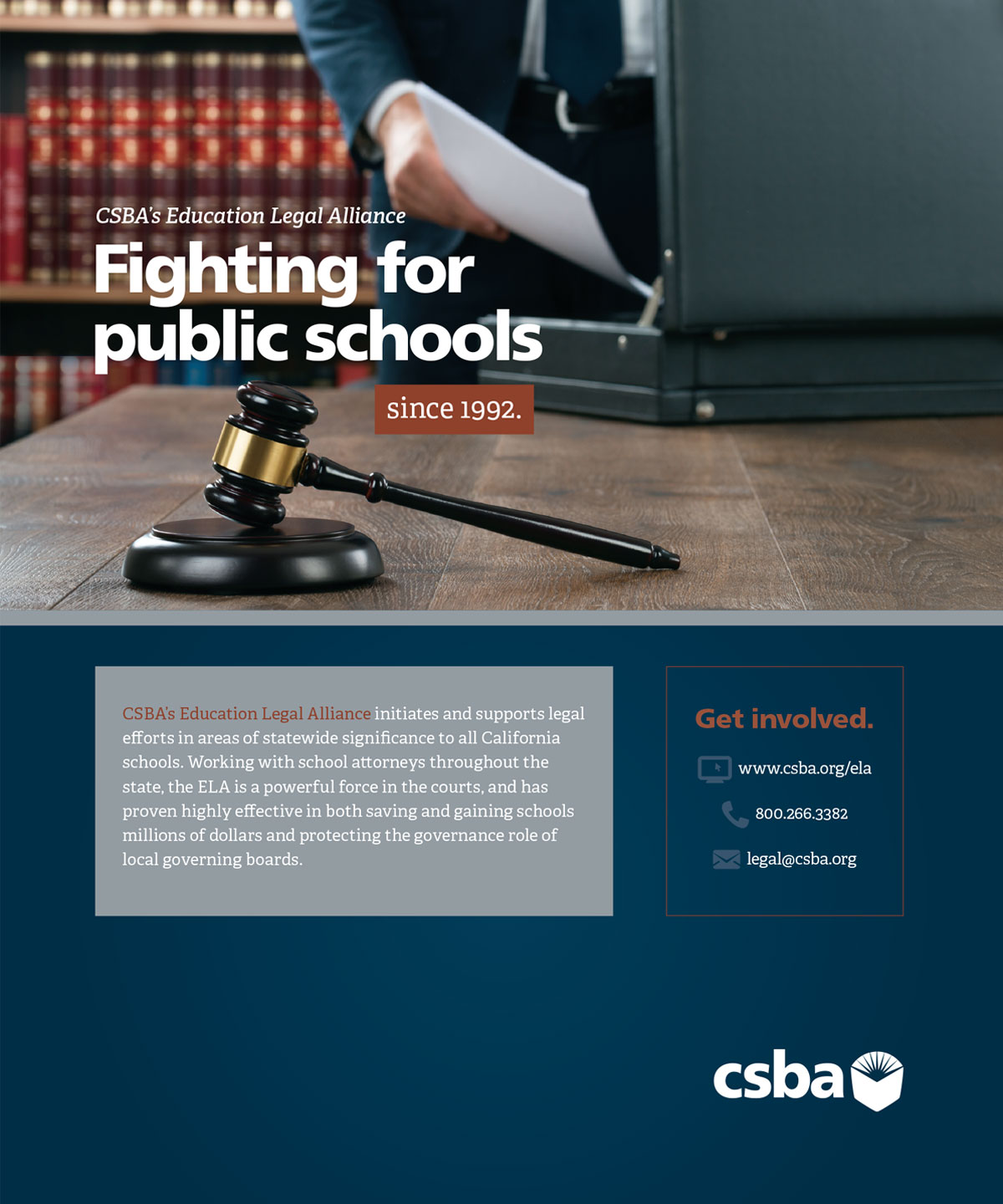
Volume 77, Number 1
Fall 2018
The California School Boards Association is the essential voice for public education. We inspire our members to be knowledgeable leaders, extraordinary governance practitioners and ardent advocates for all students.
Table of Contents
features
State superintendent candidates take on California’s complex education issues
by Hugh Biggar
Del Cederquist retires after 65 years
by Kimberly Sellery
by Vernon M. Billy
by Vernon M. Billy and Mike Walsh
by Deb Dudley, Luan Burman Rivera and Steve Ladd
by Mike Ambrose
by Jessica L. Sawko
by Hugh Biggar
Interview with Valerie Amezcua
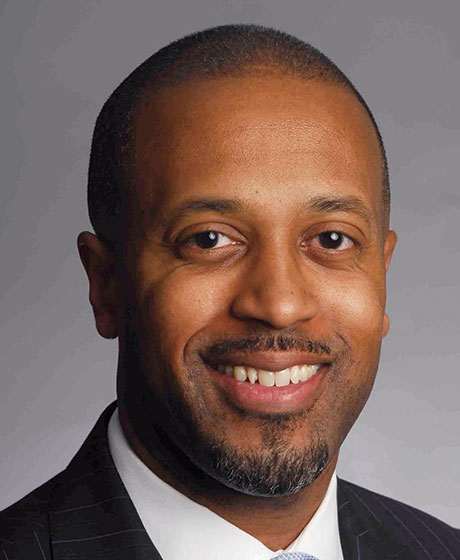
CEO’s note
by Vernon M. Billy
School facilities and Proposition 51 — it’s more than just money
t’s been more than two years since Sylvia Mendez regaled CSBA’s Delegate Assembly in May 2016 with her recollection of her family’s involvement in the historic Mendez v. Westminster case. The stories that Ms. Mendez shared with CSBA’s Delegates about her experience as a Mexican American student more than 70 years ago left a lasting impression on all of us who listened to her heroic stories of struggle while attending school in facilities that would be considered appallingly unsafe by today’s standards.
I wrote about the school conditions that Ms. Mendez described two years ago, but it bears repeating.
“Two wooden shacks on a dirt lot next to a cow pasture… Hand-me-down books… An electric fence — which shocked one of my classmates… Eating lunch outside at this school, seated next to the pasture, covered in flies.”
This is how Sylvia Mendez and the other Mendez children described the conditions of her “Mexican-only” school to our Delegates, and in a 2016 Los Angeles Times recollection of the case.
Seventy years later, is this still the condition of California’s schools? Certainly not. We’ve come a long way since then. However, the fact remains that public schools throughout the state are in dire need of safety upgrades and modernization, and many districts need to build new schools in order to relieve crowded classrooms and accommodate future student growth.
Collectively, school districts across the state have identified more than $3.5 billion worth of urgently needed construction and modernization projects, many of which have been sitting on the State Allocation Board’s backlog for several years. In recognition of this need, California’s voters resoundingly approved $7 billion worth of facilities bond money for K-12 construction and modernization in 2016 with the passage of Proposition 51.

CSBA 2018 board of directors
Jennifer Owen
Region 1, Fort Bragg USD
Sherry Crawford
Region 2, Siskiyou COE
A.C. “Tony” Ubalde, Jr.
Region 3, Vallejo City USD
Paige Stauss
Region 4, Roseville Joint Union HSD
Alisa MacAvoy
Region 5, Redwood City ESD
Darrel Woo
Region 6, Sacramento City USD
Yolanda Peña Mendrek
Region 7, Liberty Union HSD
Matthew Balzarini
Region 8, Lammersville Joint USD
Tami Gunther
Region 9, Atascadero USD
Susan Markarian
Region 10, Pacific Union ESD
Suzanne Kitchens
Region 11, Pleasant Valley SD
William Farris
Region 12, Sierra Sands USD
Meg Cutuli
Region 15, Los Alamitos USD
Karen Gray
Region 16, Silver Valley USD
Katie Dexter
Region 17, Lemon Grove SD
Wendy Jonathan
Region 18, Desert Sands USD
Albert Gonzalez
Region 20, Santa Clara USD
Kelly Gonez
Region 21, Los Angeles USD
Keith Giles
Region 22, Lancaster ESD
Helen Hall
Region 23, Walnut Valley USD
Donald E. LaPlante
Region 24, Downey USD
Shelly Yarbrough
Director-at-Large American Indian, Val Verde USD
Robert Gin
Director-at-Large Asian/Pacific Islander,
Alhambra USD
Bettye Lusk
Director-at-Large African American,
Monterey Peninsula USD
Heidi Weiland
Director-at-Large County, El Dorado COE
Kathryn Ramirez
Director-at-Large Hispanic, Salinas Union HSD
Bruce Dennis
CCBE President, Riverside COE
Frank Pugh
NSBA President, Santa Rosa City Schools
Micah Ali
NSBA Director, Compton USD
Chris Ungar
NSBA Director, San Luis Coastal USD
On Aug. 14, CSBA placed the following open letter to California’s gubernatorial candidates in the Los Angeles Times, Sacramento Bee, San Diego Union-Tribune and the Bay Area Newspaper Group papers.
An Open Letter to the
Next Governor of California
Let’s stop playing games: It’s time to release the $7 billion in school facilities funding approved by voters
Dear Lt. Governor Gavin Newsom and Mr. John Cox:
In November, Californians will head to the polls and elect one of you as our state’s next Governor. The election of California’s Governor is an expression of our democracy and a reflection of the voters’ will.
Two years ago, the voters overwhelmingly approved Proposition 51 to provide $7 billion for the renovation, modernization and construction of K-12 schools and to fund facilities for charter schools and Career Technical Education programs. The California School Boards Association urges the next Governor — whoever he may be — to respect the will of the voters and release the funding they approved for the betterment of public schools.
Every day during the academic year, California’s public schools welcome more than six million students. Our schools are living laboratories designed to impart knowledge and promote intellectual curiosity, help develop our state’s pipeline of workers and mold the next generation of civic leaders to serve as the caretakers of our democracy. In our classrooms, children learn how to read and write for the first time, discover robotics, participate in apprenticeship programs, study science and chemistry, or develop their artistic talents. It’s essential that we provide our students with the best possible learning environment for these formative experiences.
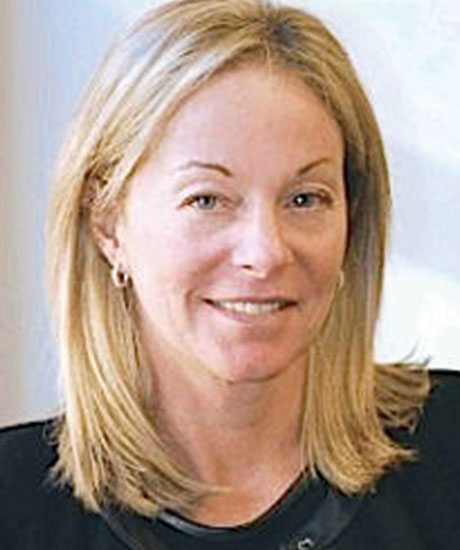
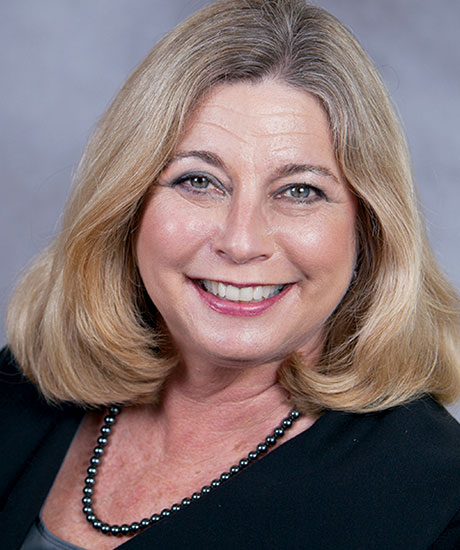

BoardWise
by Deb Dudley, Luan Burman Rivera and steve Ladd
BoardWise is a forum for board members and superintendents across the state to share questions about governance and board–superintendent relations. Send your questions to boardwise@csba.org.
This year, in addition to our column regulars, Deb Dudley and Luan Burman Rivera, we are welcoming new consultants to the column. This issue introduces Steve Ladd, Ed.D, who has been an educator for over 40 years. He most recently served as the superintendent of Elk Grove Unifi ed School District, the fi fth largest school district in California. Steve retired in 2014 and has continued to work in education as a consultant.
Public comment at board meetings
Dear BoardWise,
Our district has community members who regularly provide public comment. Not all community members are aware of the requirements for public comment and do not realize that board members may not respond to the public comment speakers. This has led to a growing community perception that because our board does not respond, we are unwilling to engage with the community. How can we communicate the requirements for public comment, clarify expectations and engage within the parameters of conducting public comment?
Luan: Great question! School board members are elected to represent their communities and to ensure that the views, wishes and beliefs of the community are represented in their schools. Public comment at board meetings is one way in which the community can express their views directly to the board.
Bylaws provide the structure in which public comment can be conducted. CSBA’s Sample Bylaw BB 9323— Meeting Conduct states, “Members of the public are encouraged to attend board meetings and to address the board concerning any item on the agenda or within the board’s jurisdiction.” In this way, public comment on agenda items are intended to help inform the board’s deliberation.

Senior Director of Communications
Troy Flint, tflint@csba.org
Managing Editor
Kimberly Sellery, ksellery@csba.org
Marketing Director
Serina Pruitt, spruitt@csba.org
Staff Writers and Contributors
Hugh Biggar, hbiggar@csba.org
Aaron Davis, adavis@csba.org
Graphic Design Manager
Kerry Macklin, kmacklin@csba.org
Senior Graphic Designer
Carmen Rodriguez, crodriguez@csba.org
Circulation and Advertising
csba@csba.org
CSBA OFFICERS
President
Mike Walsh, Butte COE
President-elect
Emma Turner, La Mesa-Spring Valley SD
Vice President
Xilonin Cruz-Gonzalez, Azusa USD
Immediate Past President
Susan Henry, Huntington Beach Union HSD
CEO & Executive Director
Vernon M. Billy
California Schools (ISSN 1081-8936) is published quarterly by the California School Boards Association, Inc., 3251 Beacon Boulevard, West Sacramento, CA 95691, (916) 371-4691. $2 of CSBA membership dues goes toward the subscription to California Schools magazine for each board member and superintendent. The subscription rate for each CSBA nonmember is $20. Periodicals postage paid at West Sacramento, CA and at additional mailing office. Postmaster: Send address changes to California Schools, 3251 Beacon Blvd., West Sacramento, CA 95691.
Articles submitted to California Schools are edited for style, content and space prior to publication. Views expressed are those of the authors and do not necessarily represent CSBA policies or positions. Articles may not be reproduced without written permission of the publisher. Endorsement by CSBA of products and services advertised in California Schools is not implied or expressed.

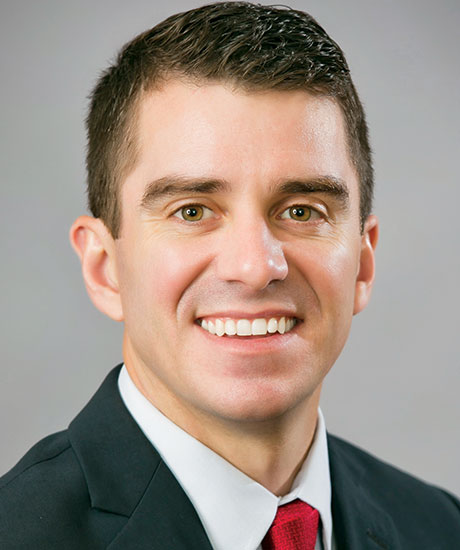
legal insights
BY MIKE AMBROSE
Janus v. AFSCME and new California legislation
The impact on California’s local educational agencies
The Supreme Court’s Decision: On June 27, 2018, the U.S. Supreme Court ruled in Janus v. AFSCME that public employee unions can no longer collect mandatory agency fees from the public employees they represent. The Court’s 5-4 decision overturned its 1977 Abood v. Detroit Board of Education decision, creating an uncertain future for public employee unions and ripple effects for school districts and county offices of education throughout California.
Prior to the Court’s ruling, in California and 21 other states, public employees were required to pay an agency fee if they chose not to join the union — these fees covered the union’s collective bargaining activities and other nonpolitical spending. Employees were only able to opt out of the fees that would go toward a union’s political activities, such as lobbying, donations to campaigns and donations to political candidates.
The plaintiff in this case, Mark Janus, argued that compelling employees to pay agency fees was a violation of their First Amendment rights — that labor union bargaining activity is inherently political as well, and he should be able to opt out of paying any fees to the union. The Court found that a mandatory agency fee “violates the free speech rights of nonmembers by compelling them to subsidize private speech on matters of substantial public concern.”
Public employees can no longer be compelled to pay agency fees if they choose not to join their union.
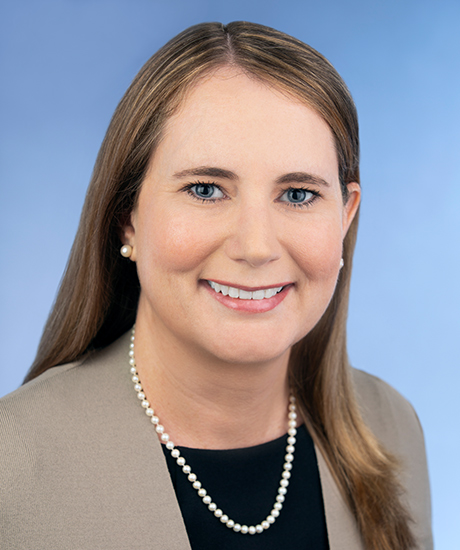
from the field
By Jessica L. Sawko
The new California Science Test
What board members need to know
his spring, schools with students enrolled in fifth grade, eighth grade and high school will administer the first operational version of the new California Science Test (CAST) to assess students’ understanding of science. The testing follows the framework of the innovative California Next Generation Science Standards, commonly known as CA NGSS.
Accountability
The CAST, along with the California Alternate Assessment — Science, will be important in measuring if implementation of the CA NGSS is on track and aiding in preparing students for college and career in the 21st century.

csba at issue
by Hugh Biggar
A personal approach provides important heads-up on concussion awareness
ith concussions a leading cause of injury to high school athletes, a new study has determined that using train-the-trainer instruction to raise awareness is one of the most effective means of education.
The researchers evaluated knowledge of concussions among 162 student athletes at six high schools in the San Juan Unified School District near Sacramento. Schools were split into three groups, with one having coaches take a workshop on concussion awareness and then sharing that information with students (a technique known as “train-the-trainer”), a second cohort providing students with concussion handouts and a video, and a final cohort of students receiving only an information sheet as required under state law. The survey was given before and after fall sports season to measure the effectiveness of each approach.
class act: Best practices in action
class act:
Best practices in action
class act:
Best practices in action
How one district practices inclusive education
nclusion is more than an educational buzzword at San Benito High School in Hollister, Calif., where students with special needs are not just included, but embraced and accepted by their general education peers. The school has at least 10 programs that focus on preparing students in the Life Skills program “to be active and confident members of our community and of society,” said Paulette Cobb, the district’s director of special education.
Beyond the benefits that these various programs have for students with disabilities, “we build empathetic and socially conscious general education peers through our inclusionary practices,” Cobb said.
With names like “Gifted Cheer,” “Gifted Soccer,” “Life Skills Prom” and the “Peer Helper Program,” the district offers a wide range of programs that Cobb proudly notes were not mandated curriculum but rather put in place by staff and/or students. Programs include:

How long have you been a school board member and what inspired you to become one?
I was elected to the board in 2014. My son was my inspiration. As a mother and community member, I felt there was a need to engage. My family has deep roots in the community and I felt a responsibility to be a change agent.
List three books that left a lasting impression on you.
Tattoos on the Heart, Father Gregory Boyle; I Wish My Teacher Knew, Kyle Schwartz; and The Alchemist, Paulo Coelho
Who was one of your favorite teachers and why?
I was a product of teen parents and was raised by my grandmother and a “village.” Growing up, I moved around quite a bit and I did not have one teacher that was my favorite. However, I had many teachers that knew I was in need of a “little extra,” and they made sure I received it.
What previous jobs have you held and how have they influenced your interests as a board member?
As a supervising probation officer for 30 years, I have worked gang suppression, gang intervention/prevention, domestic violence, sex crimes and other assignments. This has exposed me to the many challenges and trauma our children experience every single day. I work diligently as a board member to create policy that will create academic success for our children.
Who was the one adult you looked up to as a child and why?
My grandmother Linda was the one adult I looked up to as a child. She was a single mother raising her own children but also her grandchildren. She loves me unconditionally and to this day I hold tight to the values, life lessons and guidance she gives me.
What advice do you have for new or aspiring board members?
Never forget we are here to serve our communities and that it is our responsibility to be fiscally responsible, implement policy, guide district priorities and lead by “listening.” Our students are watching how we behave, what we say and what we do.
Who inspires you as an adult?
I am very fortunate to have mentors that inspire me and guide me not only as a mother, community member and retired law enforcement officer but also as president of the Santa Ana USD Board of Education. The students I come into contact with on a regular basis also inspire me. They are my “why.”
What is one major concern you hope to alleviate as a board member?
As a board member, one major concern I have for my community is the fear that our immigrant community lives with every day. I continually remind them that school is the safest place for them to be and that we will do our best to provide academic support but also address their social-emotional needs.
Would you like to participate in an upcoming Member Profile? Contact us at editor@csba.org.


How long have you been a school board member and what inspired you to become one?
I was elected to the board in 2014. My son was my inspiration. As a mother and community member, I felt there was a need to engage. My family has deep roots in the community and I felt a responsibility to be a change agent.
List three books that left a lasting impression on you.
Tattoos on the Heart, Father Gregory Boyle; I Wish My Teacher Knew, Kyle Schwartz; and The Alchemist, Paulo Coelho
Who was one of your favorite teachers and why?
I was a product of teen parents and was raised by my grandmother and a “village.” Growing up, I moved around quite a bit and I did not have one teacher that was my favorite. However, I had many teachers that knew I was in need of a “little extra,” and they made sure I received it.
What previous jobs have you held and how have they influenced your interests as a board member?
As a supervising probation officer for 30 years, I have worked gang suppression, gang intervention/prevention, domestic violence, sex crimes and other assignments. This has exposed me to the many challenges and trauma our children experience every single day. I work diligently as a board member to create policy that will create academic success for our children.
Who was the one adult you looked up to as a child and why?
My grandmother Linda was the one adult I looked up to as a child. She was a single mother raising her own children but also her grandchildren. She loves me unconditionally and to this day I hold tight to the values, life lessons and guidance she gives me.
What advice do you have for new or aspiring board members?
Never forget we are here to serve our communities and that it is our responsibility to be fiscally responsible, implement policy, guide district priorities and lead by “listening.” Our students are watching how we behave, what we say and what we do.
Who inspires you as an adult?
I am very fortunate to have mentors that inspire me and guide me not only as a mother, community member and retired law enforcement officer but also as president of the Santa Ana USD Board of Education. The students I come into contact with on a regular basis also inspire me. They are my “why.”
What is one major concern you hope to alleviate as a board member?
As a board member, one major concern I have for my community is the fear that our immigrant community lives with every day. I continually remind them that school is the safest place for them to be and that we will do our best to provide academic support but also address their social-emotional needs.
Would you like to participate in an upcoming Member Profile? Contact us at editor@csba.org.
Congratulations
to CSBA’s Masters in Governance Class of 2018 graduates!
Join CSBA’s Masters of Governance (MIG) Program and equip yourself with the knowledge and skills necessary to build and support an effective governance structure. The following graduates have successfully completed the program:
Adelanto ESD
Amy Nguyen-Hernandez
Arcadia USD
Leigh Chavez
Arvin Union SD
Ruth Pichardo Harris
Bakersfield City ESD
Russ Shuppert
Covina-Valley USD
Sue Maulucci
Delano Union ESD
Efrain Rodriguez
Suzanne Villaruz
Delhi USD
Carolyn Ridge
Desert Sands USD
Linda Porras
Kern COE
Jose Gonzalez
Mary Barlow
Kernville Union ESD
Allison Bogart
La Mesa-Spring Valley SD
David Feliciano
Lakeside Union ESD
Gaby Schmidt
Heather Fallis
Ty Bryson
Newman-Crows Landing USD
Paul Wallace
Palo Verde USD
Charles Bush
Jamey Mullion
Martha Gutierrez
Raisin City ESD
Anna Rasmussen
Ramona USD
Anne Staffieri
Selma USD
Jennifer Winter
Tanya Fisher
Sierra Sands USD
Amy Castillo-Covert
Ernie Bell
Kurt Rockwell
Michael Scott
Tim Johnson
William Farris
Southern Kern USD
Yolanda Sanchez

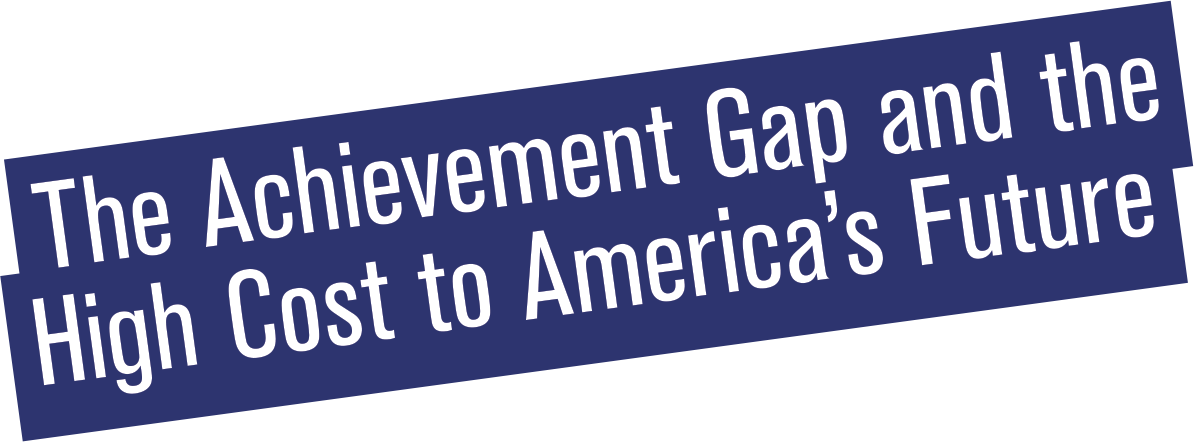


Today, educationis perhaps the most important function of state and local governments … In these days, it is doubtful that any child may reasonably be expected to succeed in life if he is denied the opportunity of an education. Such an opportunity, where the state has undertaken to provide it, is a right which must be made available to all on equal terms …”
— Brown v. Board of Education of Topeka, Kansas
Almost 65 years after U.S. Supreme Court Justice Earl Warren delivered the unanimous opinion in Brown v. Board, the right to education on equal terms remains elusive. Brown effectively ended de jure segregation in American schools, but de facto segregation remains commonplace and disparities abound along racial, gender and socioeconomic lines. While the nation has grown ever more diverse in the decades since Brown, its ability to meet the needs of a changing student population has failed to keep pace. That failure comes with a steep price in terms of lost potential, forgone prosperity and abdication of our stated values.
America is experiencing levels of economic inequality that are unprecedented in the post-war era, a condition that, in a kind of unvirtuous circle, both results from and exacerbates longstanding divides in social outcomes, particularly along ethnic and racial lines. But of all the ways in which inequality hinders American progress, gaps in educational achievement are perhaps the most pernicious — and also the most complex.




Today, educationis perhaps the most important function of state and local governments … In these days, it is doubtful that any child may reasonably be expected to succeed in life if he is denied the opportunity of an education. Such an opportunity, where the state has undertaken to provide it, is a right which must be made available to all on equal terms …”
— Brown v. Board of Education of Topeka, Kansas
Almost 65 years after U.S. Supreme Court Justice Earl Warren delivered the unanimous opinion in Brown v. Board, the right to education on equal terms remains elusive. Brown effectively ended de jure segregation in American schools, but de facto segregation remains commonplace and disparities abound along racial, gender and socioeconomic lines. While the nation has grown ever more diverse in the decades since Brown, its ability to meet the needs of a changing student population has failed to keep pace. That failure comes with a steep price in terms of lost potential, forgone prosperity and abdication of our stated values.
America is experiencing levels of economic inequality that are unprecedented in the post-war era, a condition that, in a kind of unvirtuous circle, both results from and exacerbates longstanding divides in social outcomes, particularly along ethnic and racial lines. But of all the ways in which inequality hinders American progress, gaps in educational achievement are perhaps the most pernicious — and also the most complex.




Today, education
is perhaps the most important function of state and local governments … In these days, it is doubtful that any child may reasonably be expected to succeed in life if he is denied the opportunity of an education. Such an opportunity, where the state has undertaken to provide it, is a right which must be made available to all on equal terms …”
— Brown v. Board of Education of Topeka, Kansas
Almost 65 years after U.S. Supreme Court Justice Earl Warren delivered the unanimous opinion in Brown v. Board, the right to education on equal terms remains elusive. Brown effectively ended de jure segregation in American schools, but de facto segregation remains commonplace and disparities abound along racial, gender and socioeconomic lines. While the nation has grown ever more diverse in the decades since Brown, its ability to meet the needs of a changing student population has failed to keep pace. That failure comes with a steep price in terms of lost potential, forgone prosperity and abdication of our stated values.
America is experiencing levels of economic inequality that are unprecedented in the post-war era, a condition that, in a kind of unvirtuous circle, both results from and exacerbates longstanding divides in social outcomes, particularly along ethnic and racial lines. But of all the ways in which inequality hinders American progress, gaps in educational achievement are perhaps the most pernicious — and also the most complex.
ducation outcomes are influenced by a variety of issues such as family income and educational attainment, school and instructional quality, physical, social and emotional health, and access to early learning opportunities. Our effectiveness in closing achievement gaps will determine whether these disparities persist in future generations and whether America can come closer to achieving its potential, both in moral terms and practical ones.
The “Great Gatsby Curve”
In 2015, the Pew Charitable Trusts released a report by David Grusky and Pablo Mitnik of Stanford’s Center on Poverty and Inequality that found that roughly half of parental income advantages are passed on to the next generation and that children born to parents who rank in the 90th percentile for earnings will typically make three times more than the children of parents in the 10th percentile. These statistics dramatize what Alan Krueger, former chairman of the Council of Economic Advisers, calls the “Great Gatsby Curve” — the connection between economic mobility and family income.

The first step in combatting a problem is knowing it exists. The warning signs of a devastating problem currently affecting the United States — human trafficking — often go undetected. Meanwhile, human trafficking and the exploitation of children has made significant inroads in California cities and rural areas alike.
According to the Federal Bureau of Investigation, three of the U.S.’s 13 “High Intensity Child Trafficking Areas” are located in the state — San Francisco County, Los Angeles County and San Diego County. California also consistently reports the highest volume of calls to the National Trafficking Hotline among the 50 states.
School campuses statewide have been impacted as well. “Some predators are using public schools as a new hunting ground,” State Superintendent of Public Instruction Tom Torlakson said last winter. “As educators, we need to do everything we can to prevent our students from being victimized.”


The first step in combatting a problem is knowing it exists. The warning signs of a devastating problem currently affecting the United States — human trafficking — often go undetected. Meanwhile, human trafficking and the exploitation of children has made significant inroads in California cities and rural areas alike.
According to the Federal Bureau of Investigation, three of the U.S.’s 13 “High Intensity Child Trafficking Areas” are located in the state — San Francisco County, Los Angeles County and San Diego County. California also consistently reports the highest volume of calls to the National Trafficking Hotline among the 50 states.
School campuses statewide have been impacted as well. “Some predators are using public schools as a new hunting ground,” State Superintendent of Public Instruction Tom Torlakson said last winter. “As educators, we need to do everything we can to prevent our students from being victimized.”
 ith this in mind, the state’s Human Trafficking Prevention Act took effect in January 2018 under Assembly Bill 1127 (Bonta, D-Alameda). The legislation requires school districts to include labor and sexual human trafficking prevention education in grades seven through 12 as part of comprehensive sexual health education. It also requires human trafficking awareness training for school district staff.
ith this in mind, the state’s Human Trafficking Prevention Act took effect in January 2018 under Assembly Bill 1127 (Bonta, D-Alameda). The legislation requires school districts to include labor and sexual human trafficking prevention education in grades seven through 12 as part of comprehensive sexual health education. It also requires human trafficking awareness training for school district staff.
The two components of AB 1227 — prevention education for students and trafficking awareness training for school staff — are essential to identifying and providing help to current victims and preventing future victims. “By providing prevention education, AB 1227 aims to attack the problem of human trafficking at the root,” said Assemblymember Bonta in a statement upon the bill’s signing. “The goal is not only to identify students who are actively being trafficked but also to reduce the number of students who could become victims, buyers or traffickers. Successful education has the potential to prevent the trauma endured by those who are exploited.”

State Superintendent candidates take on
California’s complex education issues

From entrenched poverty to a looming pension crisis, California’s TK-12 public schools face severe challenges in the coming years. Nearly 60 percent of the state’s students receive subsidized meals, about one in five live in poverty and school districts are chronically short on money. California’s spending on education has declined to the bottom 10 states nationally in per-pupil funding and in other areas such as school counselors and nurses. This funding shortfall is expected to grow as many districts are spending an increasing percentage of their budgets on employee pension obligations and healthcare costs. Meanwhile, many school campuses are in need of renovation and repair and nearly 60 percent of California school buildings are about 40 years old.
Given this significant underinvestment, and political divides on issues such as charter schools, unions and school safety, the task of overseeing public education in the Golden State is a daunting one. Following the June primary, two candidates for the State Superintendent of Public Instruction — a position that does not set education policy but does have significant influence — have moved forward to the November election: Tony Thurmond and Marshall Tuck.
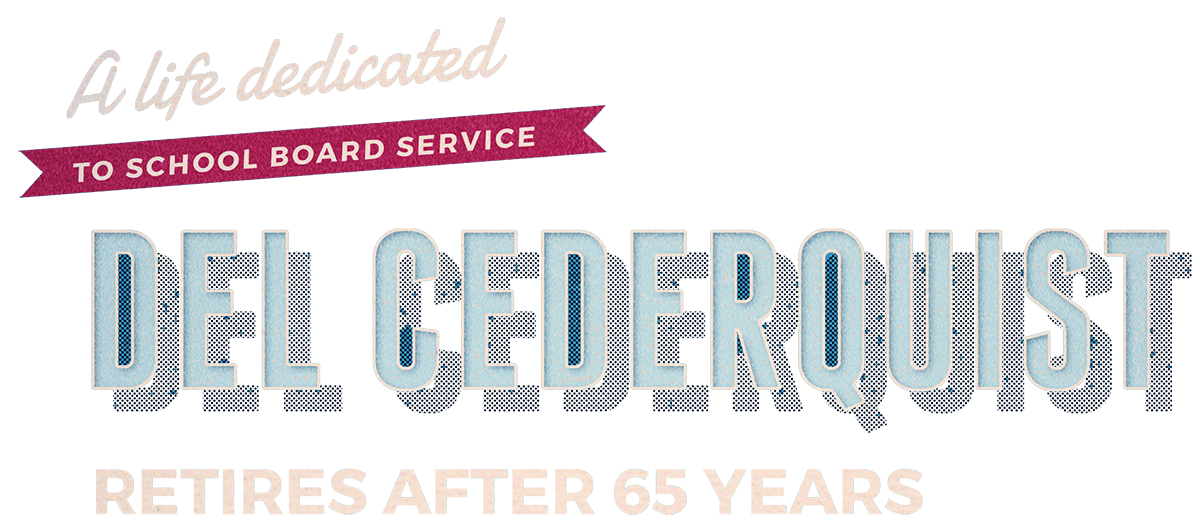
This December, Delbert Cederquist, fondly known as Del, is retiring from California school board service after 65 years, making him the longest-serving school board member in the nation and, most likely, the world. He has been a member of the California School Boards Association since 1967.
Born in 1932, Cederquist grew up attending a two-room elementary school in a rural area south of Fresno, Calif. In 1953, at the age of 21, he ran and was elected to his first school board, joining the board of trustees for the University Colony School District. In 1958, University Colony became the Pacific Union School District, where he served until 1992.
Since 1994, Cederquist has served as a trustee for Area 3 on the Fresno County Office of Education board. The county office of education has oversight over more than 190,000 students and 32 school districts throughout Fresno County.

This December, Delbert Cederquist, fondly known as Del, is retiring from California school board service after 65 years, making him the longest-serving school board member in the nation and, most likely, the world. He has been a member of the California School Boards Association since 1967.
Born in 1932, Cederquist grew up attending a two-room elementary school in a rural area south of Fresno, Calif. In 1953, at the age of 21, he ran and was elected to his first school board, joining the board of trustees for the University Colony School District. In 1958, University Colony became the Pacific Union School District, where he served until 1992.
Since 1994, Cederquist has served as a trustee for Area 3 on the Fresno County Office of Education board. The county office of education has oversight over more than 190,000 students and 32 school districts throughout Fresno County.
Cederquist represents Coalinga-Huron Joint Unified School District, Fowler Unified School District, Kings Canyon Unified School District, Laton Unified School District, Parlier Unified School District, Riverdale Joint Unified School District, Sanger Unified School District and Selma Unified School District, as well as Caruthers Unified School District, Kingsburg Joint Union High School District, Washington Union High School District and their feeder schools.
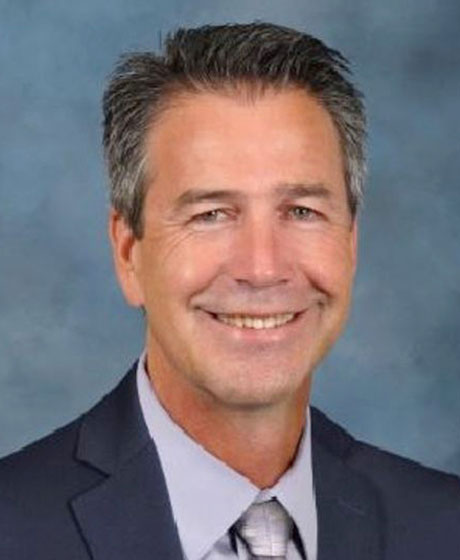
A conversation with …
Tom Armelino
om Armelino is the new executive director of the California Collaborative for Educational Excellence, a state agency founded in 2013 as part of the Local Control Funding Formula. The CCEE, along with the California Department of Education and county offices of education, compose California’s Statewide System of Support, which acts as a safety net to help struggling districts and schools get back on track.
Armelino has more than 30 years of experience in public education. Starting as a language arts teacher, he has since worked as a middle school principal, county superintendent in the Shasta County Office of Education and most recently as the executive director of the National Association of School Superintendents.
California Schools spoke with Armelino about his new role and the work of the CCEE in helping school districts close achievement and opportunity gaps.
ad index

Thanks for reading our Fall 2018 issue!


